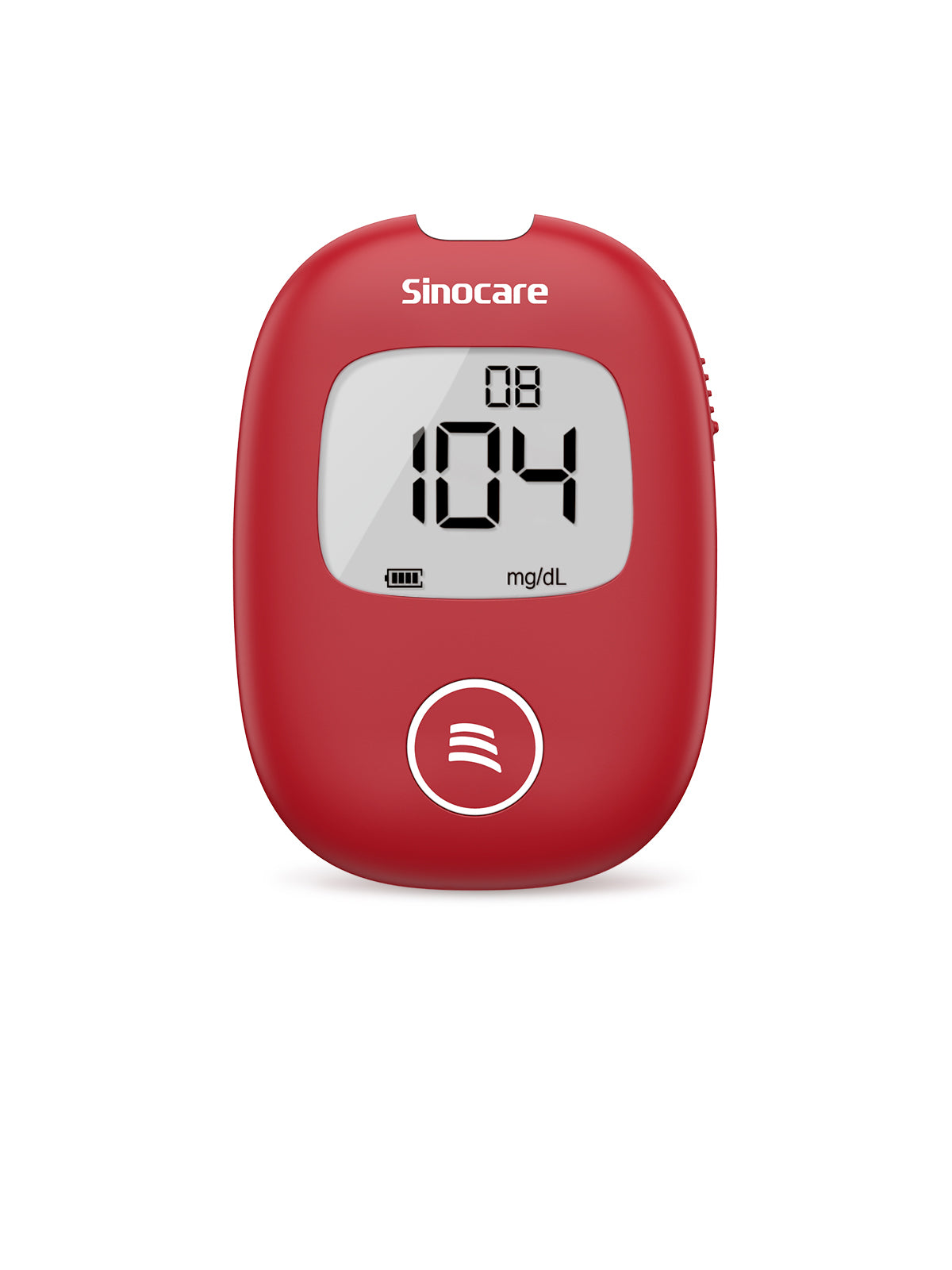Foot ulcers are one of the most serious complications of diabetes, which is caused by neuropathy and peripheral vascular disease in diabetic patients.
Diabetic foot is often manifested as lower extremity numbness and pain → foot ulceration → gangrene and/or muscle atrophy and joint deformity. In severe cases, amputation is required. As a consequence, diabetic patients must pay attention to the prevention of diabetic foot every day.
Causes & Risk Factors of Diabetic Foot
Foot ulcers in people with diabetes are most commonly caused by:
- Chapped skin
- Callus formation and foreign bodies in shoes
- Abrasion injuries by new shoes
- Prominent bones in the foot (eg, valgus, hammer toe, etc.)
- Deep trim of toenails
- Overheat water or heating device
- Long-walking
- Burst blisters
- Walking barefoot
Risk factors:
- Diabetes duration over 10 years
- Male sex
- Smoking
- Combined visual impairment (VI) and diabetic nephropathy
- Hypoalbuminemia
- Hyperuricemia
- Anemia
- Obesity
- Foot deformity
- Medical history of foot ulcer and amputation
- Charcot joint disease
- Callus
- Uncomfortable shoes and socks
- Ingrown armour
- Blisters
- Bleeding and fungal infections
- Lower extremity venous insufficiency
How to avoid foot damage?
Foot damage is the first domino to fall. Diabetic patients need to pay attention to the following things to avoid foot damage.
WASH:
Your foot soak should be between 35℃ and 37℃, and the time should be within 10 minutes. At the same time, we recommend that you use mild, non-irritating neutral soap.
CARE:
Gently dry your feet with a light-colored soft towel after washing your feet. Be sure to dry off the moisture between your toes to stay dry. Observe whether there is ulceration, bleeding and exudation between the toes. If the space between the toes is damp and whitish, wipe it with an alcohol swab.
If the skin on your feet is dry, itchy, or cracked, apply an appropriate amount of moisturizing cream (such as petroleum jelly). Remember not to apply moisturizing cream between your toes or on wounds to avoid fungal infections.
TRIM:
When cutting toenails, trim the edges of the nails into smooth straight lines, and do not trim them too short. For onychomycosis and thickened nails, you can seek help from the wound care services, and do not trim them yourself.
SOCKS:
Choose light-colored soft cotton or wool socks of which the inner seams are not rough with no breaks and patches.
SHOES:
Choose sneakers that are one size larger, breathable, and don't rub your feet. Never wear high heels or pointed shoes, and never walk barefoot. Before putting on the shoes, clear the debris in the shoes and flatten the insoles.
MASSAGE:
Massage or move your toes 2 to 3 times a day for about 10 minutes each time. Keep the movement gentle and massage from bottom to top. People with thrombosis in the lower extremities are forbidden to massage.
FORBID:
Forbid to use the warm water bag, electric blanket, warm physiotherapy device and moxibustion. Roasting, cupping and smoking are absolutely prohibited as well.
How to avoid fungal infections on foot?
Getting infected is the culprit of the worsening of the diabetic foot and the key factor of whether you could keep your limbs or not. There are several tips for diabetics to get rid of fungal infections on foot.
- Keep your feet, socks and shoes clean and dry.
- Avoid secondary infections of paronychia and beriberi.
- Do not go to unqualified places for pedicures.
Once injured, seek medical attention immediately, and do not use irritating disinfectant to clean it by yourself.
Keep blood vessels open
The diabetic patients need to keep the blood vessels healthy and open.
Do vascular ultrasonography 1-2 times a year.
Wear loose and comfortable shoes.
Keep the socks loose.
In case of foot deformities, special insoles or toe orthoses are recommended.
Control your blood pressure and blood lipid levels strictly.
If the patient has arteriosclerosis, it is recommended to add antiplatelet aggregation therapy (eg, low-dose aspirin).
Keep exercising.
While controlling blood sugar, it is also necessary to ensure vascular patency to promote the establishment of collateral blood vessels.
Other aspects:
DIET:
Timely and rationed feeding
Keep a balanced diet
Have high-quality protein such as lean meat and eggs
Increase vitamin intake
Quit smoking and drinking wine
EXERCISE:
Do not stand or walk for long
Do not cross your legs when you are sitting for long
About 20 minutes of activity in the morning and evening can promote blood circulation and improve symptoms.
Foot exercises include: lifting toes, lifting heels, bending over and squatting, swinging legs, climbing stairs, etc.
Bedridden patients can do cycling on the bed to improve blood circulation and prevent muscle atrophy.
BLOOD GLUCOSE CONTROL:
Only keeping blood sugar levels within the normal range can fundamentally prevent diabetic foot.
Fasting blood glucose level ≦7.0mmol/L
Postprandial blood glucose level ≦10.0mmol/L
POST-INJURY TREATMENT
Infected wounds should be changed daily.
Wash the wound with normal saline after disinfection, and irradiate the area with infrared light (be careful to avoid burns) to promote blood circulation and granulation growth.
SKIN CARE
Try not to break the blisters on the skin, you can use a sterile syringe to extract along the lower part of the blisters and wrap them with a dressing.
Keep skin dressings dry and change wet dressings at any time to prevent infection.
Keep the wounds clean.
The crust formed after the blisters dries up should not be peeled off artificially, but can only be allowed to fall off naturally to prevent secondary infection.
If you have tinea pedis, you can follow the doctor's advice and use antifungal drugs, and keep the wound dry and permeable to air.
EMERGENCY TREATMENT
Wash the small wounds with saline and gently wipe dry.
Do not apply dark drugs, such as gentian violet, red syrup, etc.
Avoid strong irritating disinfectants such as iodine.
Go to the hospital in time.
MENTAL HEALTH
Faced with the possible consequences of amputation caused by diabetic foot, diabetic friends are prone to anxiety, fear and other adverse psychological conditions.
What's more, they will have a negative attitude towards treatment, affect rest and sleep, and cause blood sugar fluctuations.
Medical staff should strengthen the education and psychological counseling of patients, and family members should accompany patients in rehabilitation training to promote blood circulation of residual limbs and prevent muscle atrophy.
Finally, if you want to effectively prevent diabetic foot, diabetic patients must fully control their blood sugar, blood lipids, blood pressure, and body weight to avoid the occurrence of diabetic neuropathy and vascular disease.










Leave a comment
All comments are moderated before being published.
This site is protected by hCaptcha and the hCaptcha Privacy Policy and Terms of Service apply.